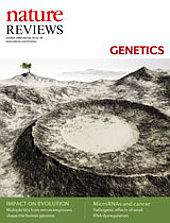
Many organisms are currently polyploid, or have a polyploid ancestry and now have secondarily 'diploidized' genomes. This finding is surprising because retained whole-genome duplications (WGDs) are exceedingly rare, suggesting that polyploidy is usually an evolutionary dead end. We argue that ancient genome doublings could probably have survived only under very specific conditions, but that, whenever established, they might have had a pronounced impact on species diversification, and led to an increase in biological complexity and the origin of evolutionary novelties.
Van de Peer, Y.,
Maere, S., Meyer, A. (2009)
The evolutionary significance of ancient genome duplications. Nat. Rev. Genet. 10(10):725-32.